Governments and private organizations have developed car classification schemes that are used for various purposes including regulation, description, and categorization of
car
A car or automobile is a motor vehicle with wheels. Most definitions of ''cars'' say that they run primarily on roads, seat one to eight people, have four wheels, and mainly transport people instead of goods.
The year 1886 is regarded as ...
s.
The International Standard ISO 3833-1977 ''Road vehicles – Types – Terms and definitions'' also defines terms for
classifying cars.
Summary of classifications
The following table summarises the commonly used terms of market segments and legal classifications.
Market segments
Microcar / kei car

Microcars and their Japanese equivalent— kei cars— are the smallest category of automobile.
Microcars straddle the boundary between car and motorbike, and are often covered by separate regulations to normal cars, resulting in relaxed requirements for registration and licensing. Engine size is often or less, and microcars have three or four wheels.
Microcars are most popular in Europe, where they originated following World War II. The predecessors to micro cars are
voiturettes and
cycle car
A cyclecar was a microcar, type of small, lightweight and inexpensive Automobile, car manufactured in Europe and the United States between 1910 and the early 1920s. The purpose of cyclecars was to fill a gap in the market between the motorcycle ...
s. Kei cars have been used in Japan since 1949.
Examples of microcars and kei cars:
*
Honda Life
*
Smart ForTwo
*
Tata Nano
A-segment / City car / Minicompact
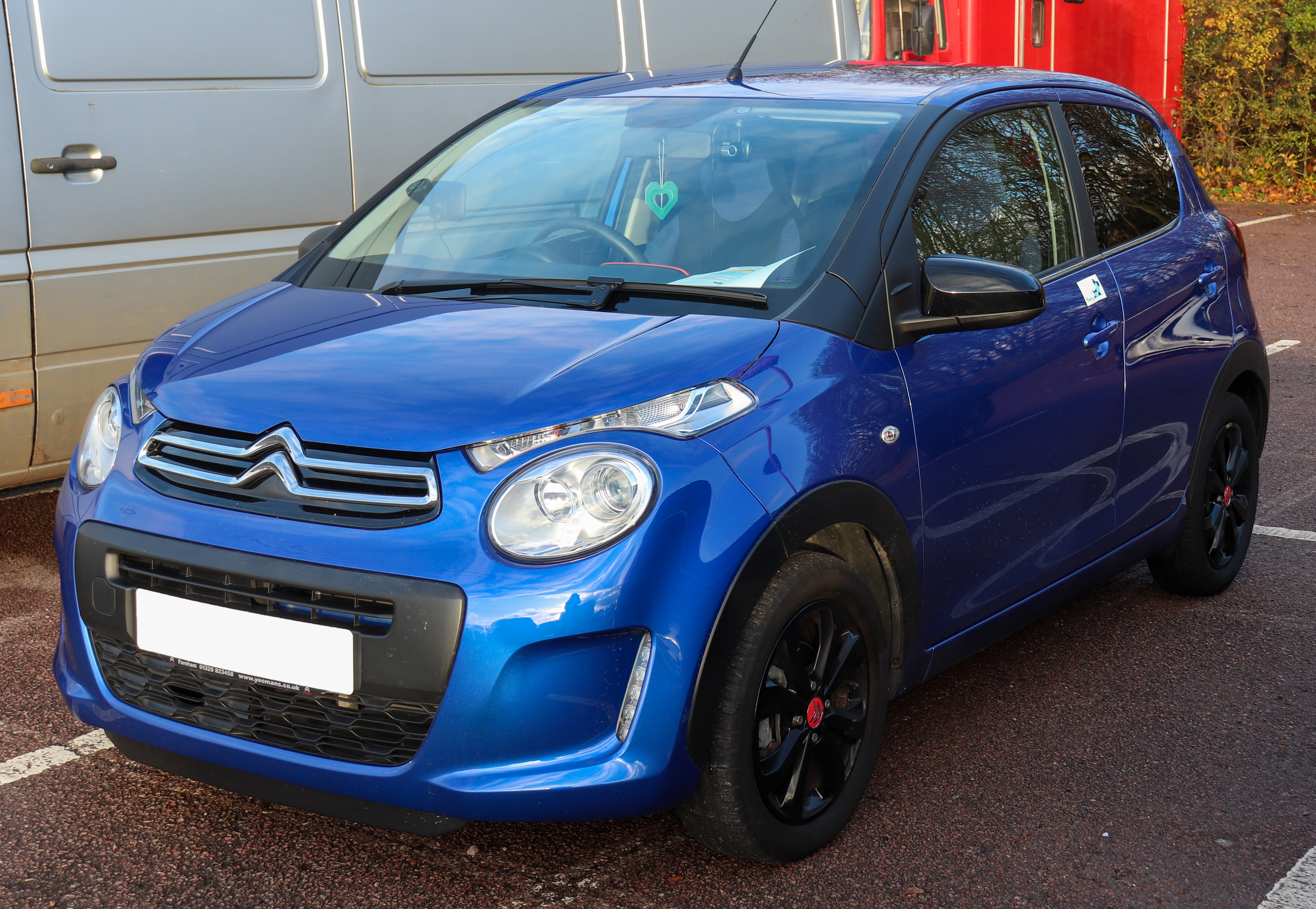
The smallest category of vehicles that are registered as normal cars is called A-segment in Europe, or "city car" in Europe and the United States. The United States Environmental Protection Agency defines this category as "minicompact." However, this term is not widely used.
The equivalents of A-segment cars have been produced since the early 1920s. However, the category increased in popularity in the late 1950s when the original
Fiat 500 and
BMC Mini were released.
Examples of A-segment / city cars / minicompact cars:
*
Fiat 500
*
Hyundai i10
*
Toyota Aygo
The Toyota Aygo is a city car (A-segment) marketed by Toyota mainly in the European market between 2005 and 2021 across two generations. The Aygo was first displayed at the 2005 Geneva International Motor Show. It was built alongside the relate ...
B-segment / Supermini / Subcompact

The next larger category small cars is called B-segment Europe,
supermini
The B-segment is the second smallest of the European segments for passenger cars between the A-segment and C-segment, and commonly described as "small cars". The B-segment is the largest segment in Europe by volume, accounting for 20 percent of ...
in the United Kingdom and
subcompact in the United States.
The size of a subcompact car is defined by the
United States Environmental Protection Agency
The Environmental Protection Agency (EPA) is an independent executive agency of the United States federal government tasked with environmental protection matters. President Richard Nixon proposed the establishment of EPA on July 9, 1970; it be ...
(EPA), as having a combined interior and cargo volume of between .
Since the EPA's smaller minicompact category is not as commonly used by the general public,
A-segment
The A-segment is the 1st category in the passenger car classification system defined by the European Commission. It is used for city cars, the smallest category of passenger cars defined.
A-segment sales represent approx. 7-8% of the market in ...
cars are sometimes called subcompacts in the United States. In Europe and Great Britain, the B-segment and supermini categories do not have any formal definitions based on size.
Early supermini cars in Great Britain include the 1977
Ford Fiesta
The Ford Fiesta is a supermini car marketed by Ford since 1976 over seven generations. Over the years, the Fiesta has mainly been developed and manufactured by Ford's European operations, and has been positioned below the Escort (later the ...
and
Vauxhall Chevette
The Vauxhall Chevette is a supermini car that was manufactured by Vauxhall in the United Kingdom from 1975 to 1984. It was Vauxhall's version of the " T-Car" small-car family from Vauxhall's parent General Motors (GM), and based primarily on th ...
.
In the United States, the first locally-built subcompact cars were the 1970
AMC Gremlin,
Chevrolet Vega, and
Ford Pinto.
Examples of B-segment / supermini / subcompact cars:
*
Chevrolet Aveo (Chevrolet Sonic)
*
Hyundai Accent
The Hyundai Accent ( ko, 현대 엑센트), or Hyundai Verna (현대 베르나) is a subcompact car produced by Hyundai. In Australia, the first generation models carried over the Hyundai Excel name used by the Accent's predecessor. The Accent ...
*
Volkswagen Polo
The Volkswagen Polo is a supermini car (B-segment) produced by the German car manufacturer Volkswagen since 1975. It is sold in Europe and other markets worldwide in hatchback, saloon, and estate variants throughout its production run.
History
...
C-segment / Small family / Compact
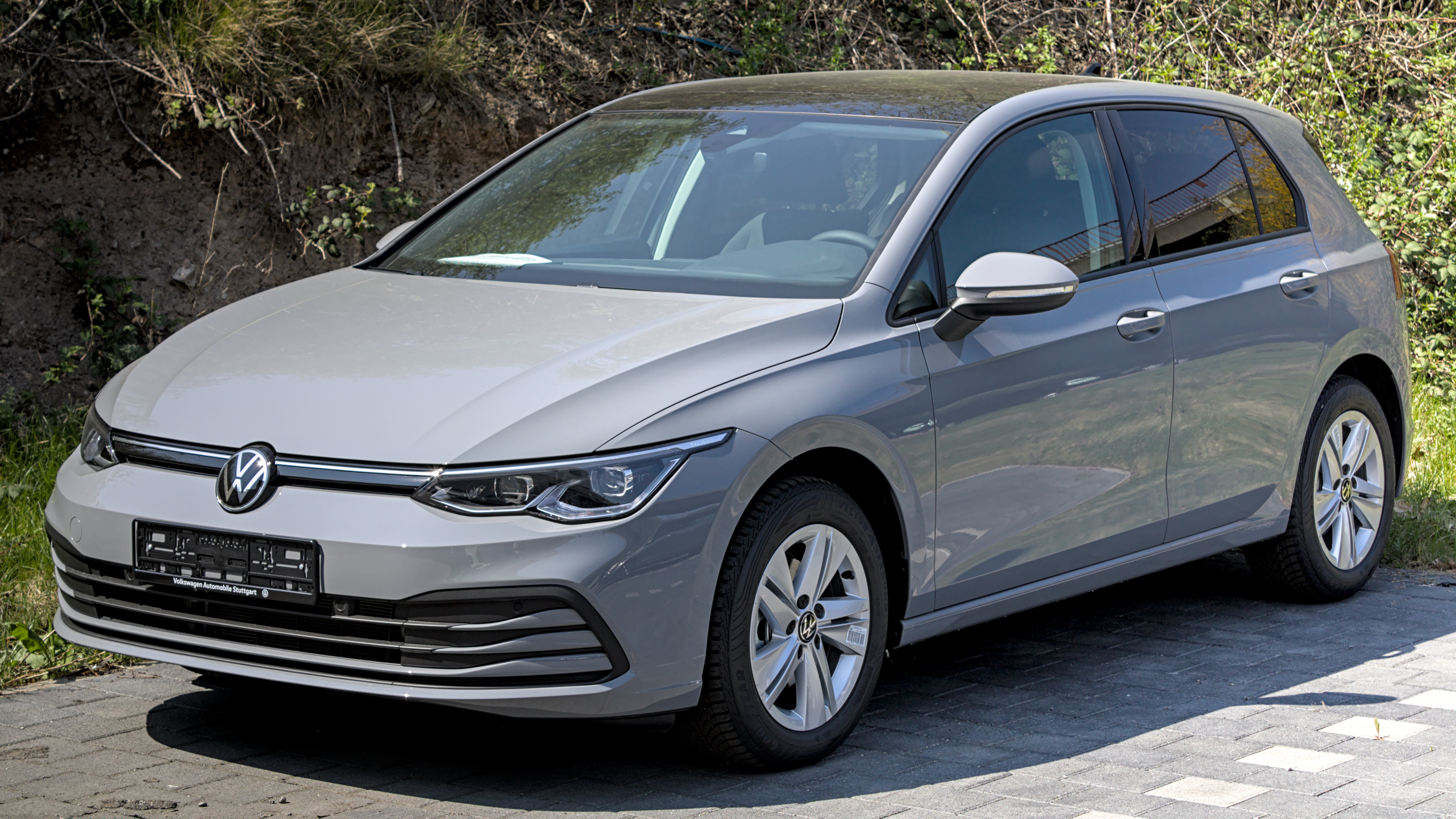
The largest category of small cars is called ''C-segment'' or ''small family car'' in Europe, and ''compact car'' in the United States.
The size of a compact car is defined by the United States Environmental Protection Agency (EPA), as having a combined interior and cargo volume of .
Examples of C-segment / compact / small family cars:
*
Honda Civic
The is a series of automobiles manufactured by Honda since 1972. Since 2000, the Civic has been categorized as a compact car, while previously it occupied the subcompact class. , the Civic is positioned between the Honda Fit/City and Honda Acc ...
*
Toyota Corolla
The is a series of compact cars (formerly subcompact) manufactured and marketed globally by the Toyota Motor Corporation. Introduced in 1966, the Corolla was the best-selling car worldwide by 1974 and has been one of the best-selling cars in ...
*
Renault Mégane
The Renault Mégane () is a small family car produced by the French car manufacturer Renault for model year 1996, and was the successor to the Renault 19. The Mégane has been offered in three- and five-door hatchback, saloon, coupé, converti ...
D-segment / Large family / Mid-size

In Europe, the third-largest category for passenger cars is called ''D-segment'' or ''large family car''.
In the United States, the equivalent term is ''mid-size'' or ''intermediate'' cars. The U.S. Environmental Protection Agency (EPA) defines a mid-size car as having a combined passenger and cargo volume of .
Examples of D-segment / large family / mid-size cars:
*
Chevrolet Malibu
*
Ford Mondeo
*
Kia K5
E-segment / Executive / Full-size
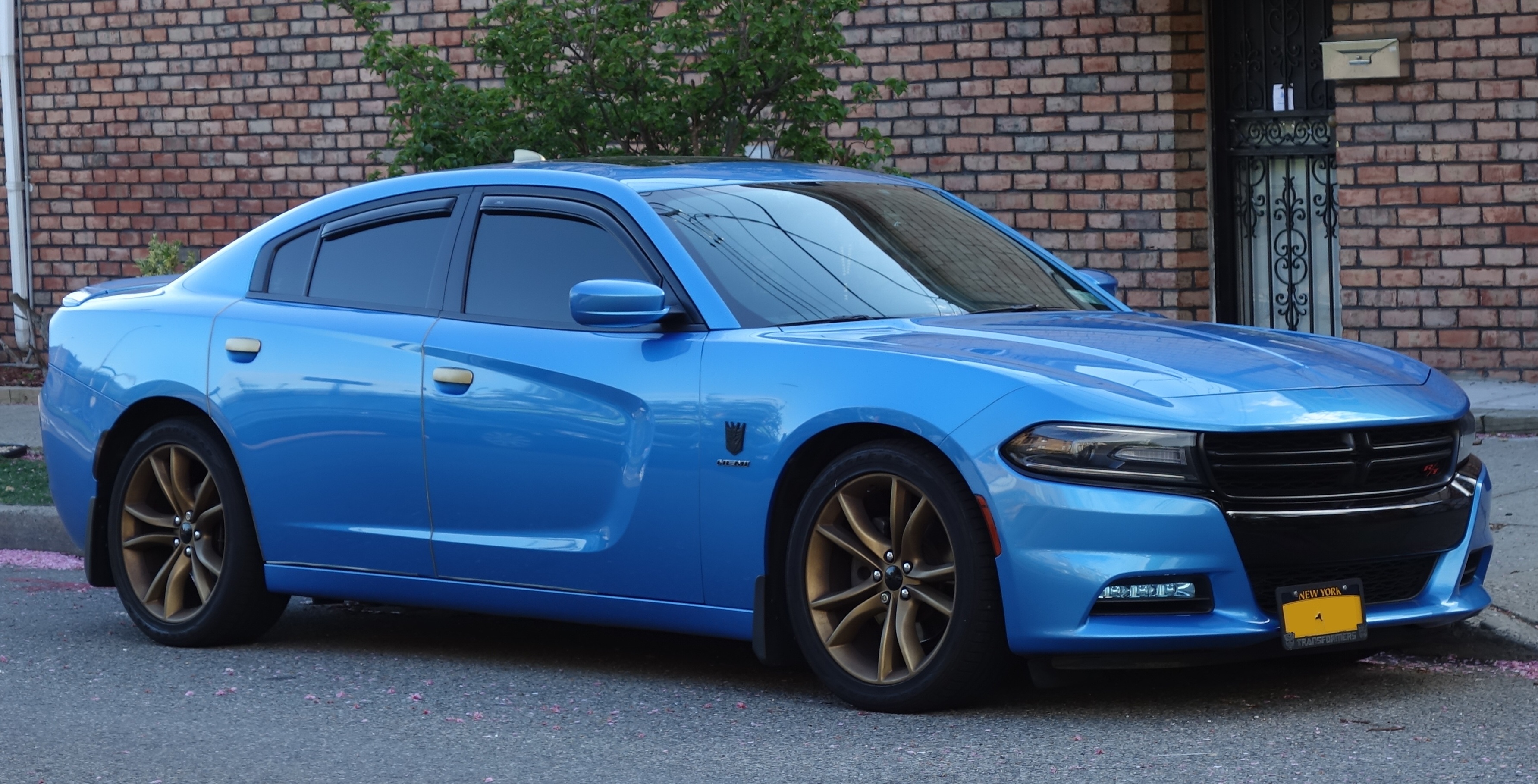
In Europe, the second-largest category for passenger cars is
E-segment / executive car, which are usually luxury cars.
In other countries, the equivalent terms are ''full-size car'' or ''large car'', which are also used for relatively affordable large cars that are not considered luxury cars.
Examples of non-luxury full-size cars:
*
Chevrolet Impala
The Chevrolet Impala () is a full-size car built by Chevrolet for model years 1958 to 1985, 1994 to 1996, and 2000 to 2020. The Impala was Chevrolet's popular flagship passenger car and was among the better-selling American-made automobiles in ...
*
Tesla Model S
The Tesla Model S is a Battery electric vehicle, battery-powered liftback car serving as the flagship model of Tesla, Inc. The Model S features a dual-motor, all-wheel drive layout, although earlier versions of the Model S featured a rear-moto ...
*
Toyota Avalon
F-segment / Luxury saloon / Full-size luxury
''See
Luxury saloon / full-size luxury section below.''
Minivans / MPVs
Minivan is an American car classification for vehicles that are designed to transport passengers in the rear seating rows, have reconfigurable seats in two or three rows. The equivalent terms in British English are multi-purpose vehicle (MPV), people carrier, and people mover. Minivans are often of the "one-box" or "two-box" body configuration, high roofs, flat floors, sliding doors for rear passengers, and high H-point seating.
Mini MPV

Mini MPV is the smallest size of MPVs and the vehicles are often built on the platforms of
B-segment hatchback models.
Examples of Mini MPVs:
*
Fiat 500L
*
Honda Freed
The is a mini MPV produced by the Japanese automaker Honda since 2008. The vehicle is designed mainly for the need of Japanese consumers. It is based on the Fit/Jazz platform and acts as a replacement for the first generation Mobilio in Japan. ...
*
Ford B-Max
Compact MPV

Compact MPV is the middle size of MPVs. The compact MPV size class sits between the mini MPV and large MPV (minivan) size classes.
Compact MPVs remain predominantly a European phenomenon, although they are also built and sold in many Latin American and Asian markets.
Examples of Compact MPVs:
*
Renault Scénic
The Renault Scénic () is a car which was produced by French car manufacturer Renault, the first to be labelled as a small multi-purpose vehicle (MPV) in Europe. The first generation was based on the chassis of the Mégane, a small family car ...
*
Volkswagen Touran
*
Ford C-Max
The Ford C-Max (stylized as Ford C-MAX and previously called the Ford Focus C-Max) is a car produced by the Ford Motor Company from 2003 to 2019. It has a five-door compact multi-purpose vehicle (MPV) design. The Ford Grand C-Max has a longer wh ...
Large MPV

The largest size of minivans is also referred to as "large MPV" and became popular following the introduction of the 1984 Renault Espace and Dodge Caravan. Since the 1990s, the smaller compact MPV and mini MPV sizes of minivans have also become popular. If the term "minivan" is used without specifying a size, it usually refers to a large MPV.
Examples of Large MPVs:
*
Chrysler Pacifica
*
Ford S-Max
*
Toyota Sienna
Luxury vehicles
Premium compact
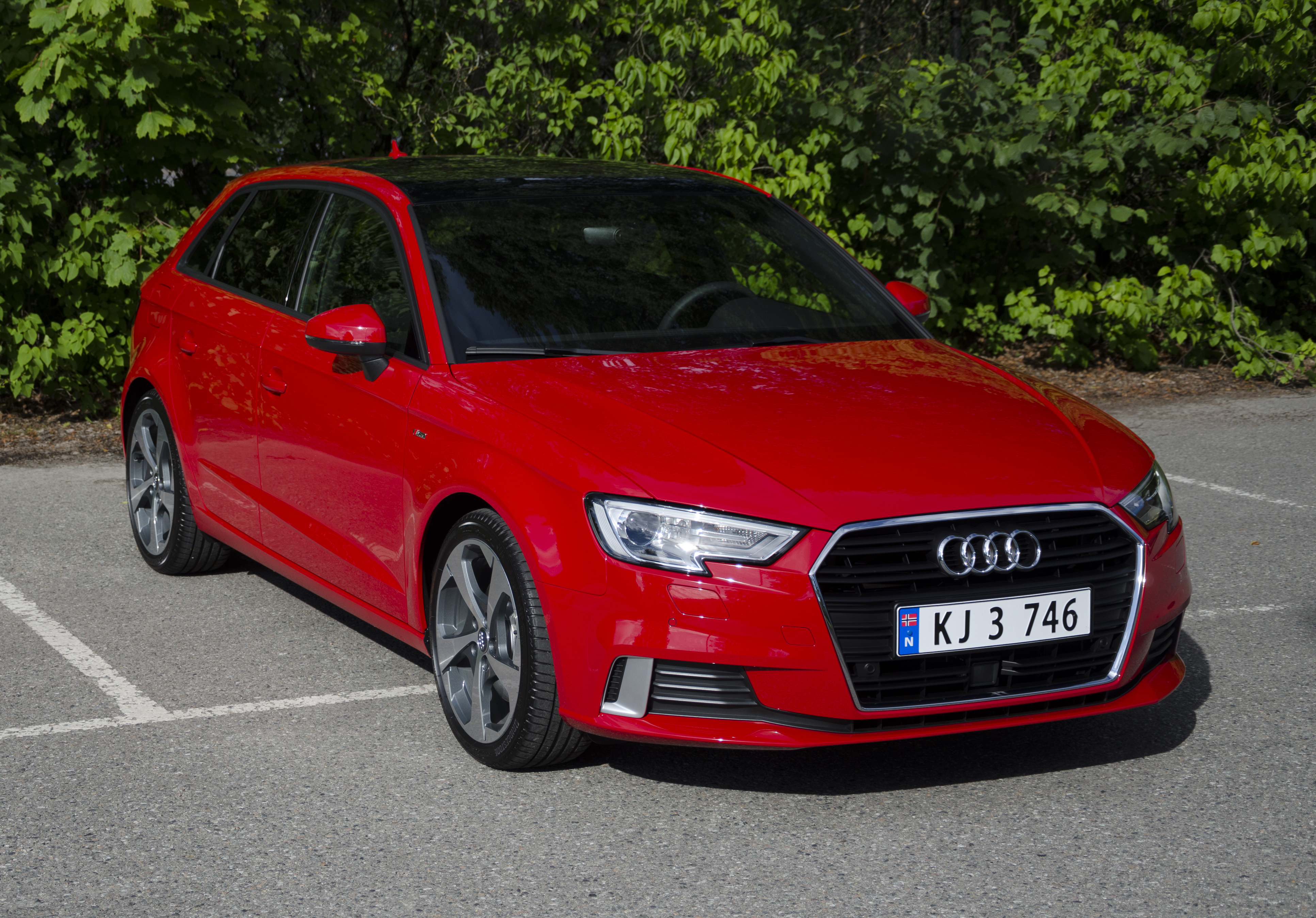
The premium compact class (also called subcompact executive) is the smallest category of luxury cars. It became popular in the mid-2000s, when European manufacturers — such as Audi, BMW, and Mercedes-Benz — introduced new entry-level models that were smaller and cheaper than their compact executive models.
Examples of premium compact cars:
*
Acura ILX
*
Mercedes-Benz CLA-Class
The Mercedes-Benz CLA class is a series of luxury compact executive cars manufactured by Mercedes-Benz since 2013. The first generation was a four-door sedan based on the platform of the W176 A-Class and W246 B-Class compact cars, marketed as ...
*
Lexus CT200h
The is a hybrid electric automobile produced by Lexus, a luxury division of Toyota, as a premium compact hatchback. The CT, consisting of a single model called the CT 200h is a luxury hybrid based on the Toyota Prius drivetrain and Toyota MC p ...
Compact executive / luxury compact

A compact executive car or a compact luxury car is a premium car larger than a ''premium compact'' and smaller than an ''executive car''. Compact executive cars are equivalent size to mid-size cars and are part of the
D-segment
The D-segment is the 4th category of the European segments for passenger cars, and is described as "large cars".
It is equivalent to the Euro NCAP "large family car" size class, and the present-day definition of the mid-size car category use ...
in the European car classification.
In North American terms, close equivalents are "luxury compact" and "entry-level luxury car", although the latter is also used for the smaller ''premium compact cars''.
Examples of compact executive cars:
*
Audi A4
*
BMW 3 Series
*
Volvo S60
The Volvo Group ( sv, Volvokoncernen; legally Aktiebolaget Volvo, shortened to AB Volvo, stylized as VOLVO) is a Swedish multinational manufacturing corporation headquartered in Gothenburg. While its core activity is the production, distributio ...
Executive / mid-size luxury

An executive car is a premium car larger than a ''compact executive'' and smaller than an ''full-size luxury'' car. Executive cars are classified as
E-segment cars in the European car classification.
In the United States and several other countries, the equivalent categories are
full-size car (not to be confused with the European category of "full-size luxury car") or ''mid-size luxury'' car.
Examples of executive cars:
*
Mercedes-Benz E-Class
*
Lexus GS
*
Volvo S90
The Volvo S90 is an Executive car, executive sedan manufactured and marketed by Swedish automaker Volvo Cars since 2016. Its station wagon, estate variant is called the Volvo V90.
Models
For the model year of 2017 (the first model year), a shor ...
Luxury saloon / full-size luxury

The largest size of a luxury car is known as a ''luxury saloon'' in the United Kingdom and a ''full-size luxury car'' in the United States. These cars are classified as
F-segment
The F-segment is the 6th category and largest of the Euro Car Segment, European segments for passenger cars, and always belongs to "Luxury_vehicle#Luxury_saloon_/_full-size_luxury_sedan, luxury cars".
The equivalent categories are full-size lux ...
cars in the European car classification.
Vehicles in this category are often the flagship models of luxury car brands.
Examples of luxury saloons:
*
BMW 7 Series
The BMW 7 Series is a full-size luxury sedan manufactured and marketed by the German automaker BMW since 1977. It is the successor to the BMW E3 "New Six" sedan and is now in its seventh generation.
The 7 Series is BMW's flagship car and is on ...
*
Lincoln Continental
*
Porsche Panamera
Sports / performance cars
Cars that prioritize
handling
Handling may refer to:
* Automobile handling, the turning characteristics of land vehicles
* Handling of stolen goods, a statutory offence in England and Wales and Northern Ireland
People
* Adam Handling (born 1988), British chef and restaura ...
or straight-line acceleration are called sports cars or performance cars. However the term "sports car" is also sometimes used specifically for lightweight two-seat cars. Sports/performance cars can either be built on unique platforms or be upgraded versions of regular cars.
Common categories of sports/performance cars are:
*
sports car
A sports car is a car designed with an emphasis on dynamic performance, such as handling, acceleration, top speed, the thrill of driving and racing capability. Sports cars originated in Europe in the early 1900s and are currently produced by ...
*
sports sedan / sports saloon
*
supercar
*
hypercar
*
hot hatch
*
sport compact
Sport compact is an American car classification for a high-performance version of an affordable compact car or a subcompact car. There is no precise definition and the description is applied for marketing purposes to a wide variety of models.
C ...
*
muscle car
Muscle car is a description according to ''Merriam-Webster Dictionary'' that came to use in 1966 for "a group of American-made two-door sports coupes with powerful engines designed for high-performance driving." The '' Britannica Dictionary'' ...
*
pony car
*
grand tourer
The definitions for these categories are often blurred and a car may be a member of multiple categories.
Sports car
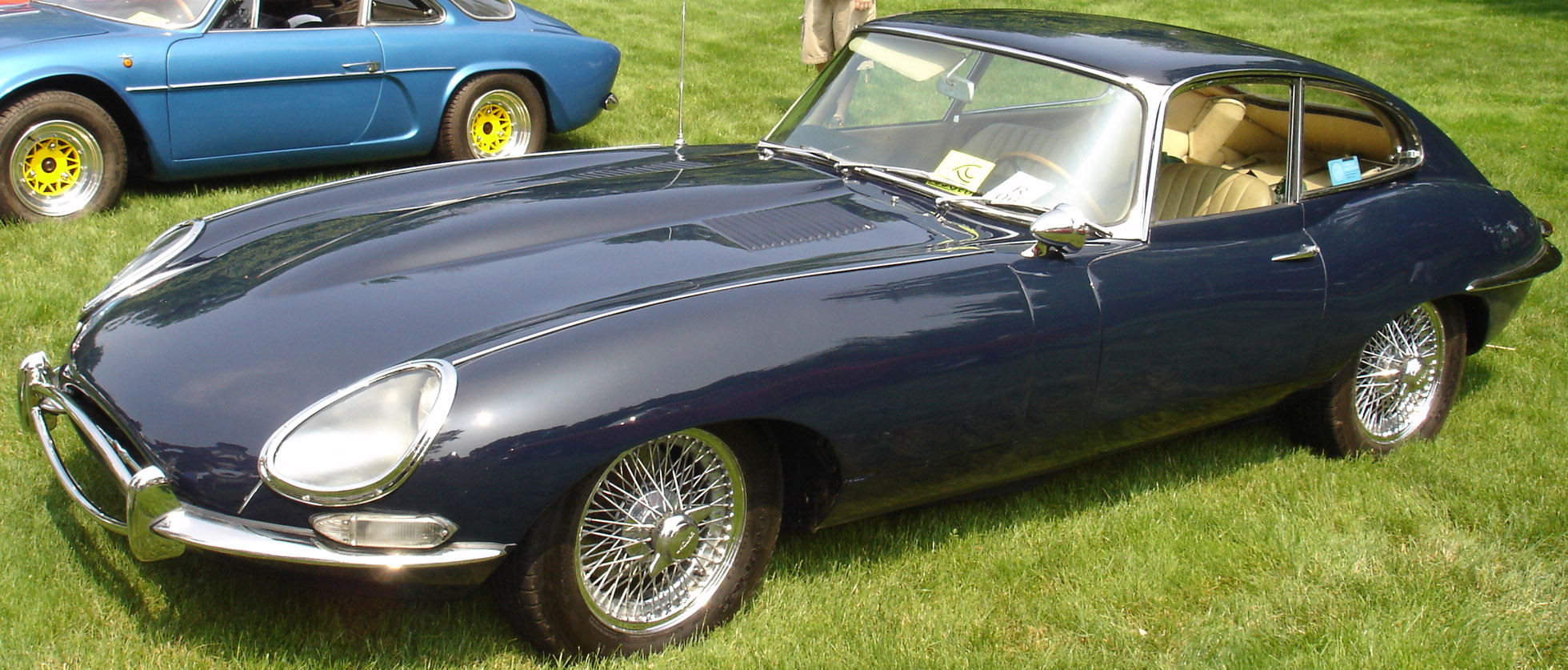
Sports cars are designed to emphasize handling, performance, or the thrill of driving. Sports cars originated in Europe in the early 1900s, with one of the first recorded usages of the term "sports car" being in ''The Times'' newspaper in the United Kingdom in 1919.
[Motor Show. Development of the Sporting Car. ''The Times'' (London, England), Wednesday, 12 November 1919; pg. 6; Issue 42255] Sports cars started to become popular during the 1920s. The term was originally used for two-seat
roadsters (cars without fixed roofs). However, since the 1970s the term has also been used for cars with fixed roofs (which were previously considered
grand tourers).
Examples of sports cars:
*
Chevrolet Corvette
*
Mazda MX-5
*
Porsche 911
The Porsche 911 (pronounced ''Nine Eleven'' or in german: Neunelfer) is a two-door 2+2 high performance rear-engined sports car introduced in September 1964 by Porsche AG of Stuttgart, Germany. It has a rear-mounted flat-six engine and origin ...
Sports sedan / sports saloon

A ''sports sedan'' — also known as "sports saloon" — is a subjective term for a
sedan/saloon car which is designed to have sporting performance or handling characteristics.
Examples of sports sedans:
*
BMW M5
*
Mazdaspeed6 / Mazda 6 MPS
*
Dodge Charger
The Dodge Charger is a model of automobile marketed by Dodge in various forms over seven generations since 1966.
The first Charger was a show car in 1964. A 1965 Charger II concept car resembled the 1966 production version.
The Charger has ...
Supercar / hypercar
A supercar – also called an exotic car – is a loosely-defined description of certain high-performance sportscars. Since the 1990s or 2000s, the term "hypercar" has come into use for the highest performing supercars.
Examples of supercars:
*
McLaren P1
*
Koenigsegg Agera R
Koenigsegg Automotive AB () is a Swedish manufacturer of high-performance sports cars based in Ängelholm, Skåne County, Sweden.
Company
The company was founded in 1994 in Sweden by Christian von Koenigsegg, with the intention of producing ...
*
Bugatti Veyron 16.4
The Bugatti Veyron EB 16.4 is a mid-engine sports car, designed and developed in Germany by the Volkswagen Group and Bugatti and manufactured in Molsheim, France, by French automobile manufacturer Bugatti. It was named after the racing driver Pie ...
SUVs / off-road vehicles
Passenger vehicles with off-road capability or styling features are often categorized as either off-road vehicles, sports utility vehicles, or crossover SUVs. There are no commonly agreed boundaries between these categories, and usage of the terms varies between countries.
Off-road vehicle

The earliest type of passenger vehicle is called an "off-roader", "four-by-four" or "four-wheel drive". Off-road vehicles usually more focussed on off-road capability than SUVs and crossover SUVs (often compromising their on-road ride quality or handling). Common features of off-road vehicles are
four-wheel drive
Four-wheel drive, also called 4×4 ("four by four") or 4WD, refers to a two-axled vehicle drivetrain capable of providing torque to all of its wheels simultaneously. It may be full-time or on-demand, and is typically linked via a transfer case ...
, high ground clearance, a
body-on-frame
Body-on-frame, also known as ladder frame construction, is a common motor vehicle construction method, whereby a separate body or coach is mounted on a strong and relatively rigid vehicle frame or chassis that carries the powertrain (the engin ...
(separate chassis) construction and low-range gearing.
Examples of off-road vehicles:
*
Nissan Patrol
*
Toyota Landcruiser
is a Japanese multinational automotive manufacturer headquartered in Toyota City, Aichi, Japan. It was founded by Kiichiro Toyoda and incorporated on . Toyota is one of the largest automobile manufacturers in the world, producing about 10 ...
*
Suzuki Jimny
The is a series of four-wheel drive off-road mini SUVs, manufactured and marketed by Japanese automaker Suzuki since 1970.
Originally belonging to the kei class, Japan's light automobile tax/legal class, the company continues to market a kei- ...
Sport utility vehicle

A sports utility vehicle (SUV) combines elements of road-going passenger cars with features from off-road vehicles, such as raised ground clearance and four-wheel drive.
There is no commonly agreed definition of an SUV, and usage varies between countries. Some definitions claim that an SUV must be built on a light-truck chassis. However, a broader definition considers any vehicle with off-road design features as an SUV. In some countries — such as the United States — SUVs have been classified as "light trucks", resulting in more lenient regulations compared to passenger cars.
The predecessors to SUVs date back to military and low-volume models from the late 1930s, and the four-wheel drive station wagons / carryalls that began to be introduced in 1949. The 1984 Jeep Cherokee (XJ) is considered to be the first SUV in the modern style. Most SUVs produced today use unibody construction (as per passenger cars). However, in the past, many SUVs used body-on-frame construction.
Examples of SUVs:
*
Chevrolet Tahoe
The Chevrolet Tahoe, and its badge engineered GMC Yukon counterpart, are full-size SUVs from General Motors, offered since 1994 and 1991, respectively. Since 1982, Chevrolet and GMC sold two different-sized SUVs under their 'Blazer' and 'Jimmy ...
*
Mercedes-Benz M-Class
*
Mitsubishi Pajero
Crossover SUV

A crossover SUV— also called crossover or CUV— is a type of sports utility vehicle (SUV) that uses a
unibody
A vehicle frame, also historically known as its '' chassis'', is the main supporting structure of a motor vehicle to which all other components are attached, comparable to the skeleton of an organism.
Until the 1930s, virtually every car ha ...
construction. Crossovers are often based on a platform shared with a passenger car, as a result, they typically have better comfort and fuel economy, but less off-road capability (many crossovers are sold without all-wheel drive) than truck-based SUVs, though more so than passenger cars.
There are various inconsistencies about whether vehicles are considered crossovers or SUVs, therefore the term SUV is often used as a catch-all for both crossovers and SUVs.
Examples of crossover SUVs:
*
Nissan Qashqai
The Nissan Qashqai () is a compact crossover SUV (C-segment) developed and produced by the Japanese car manufacturer Nissan since 2006. The first generation of the vehicle was sold under the name in Japan and Australia, and Qashqai in other marke ...
*
Tesla Model Y
*
Volkswagen Tiguan
Government classification methods
These classifications can be based on
body style (e.g. sedan, coupe or hatchback), number of doors or seating capacity.
Government departments often create classification schemes for the purposes of taxation or regulating vehicle usage (e.g. vehicles that require a specific licence or are restricted to certain roads). Some jurisdictions may determine vehicle tax based upon environmental principles, such as the user pays principle.
Australia
In Australia, the Federal Chamber of Automotive Industries publishes its own classifications.
Canada
A similar set of classes is used by the Canadian EPA. The Canadian National Collision Database (NCDB) system defines "passenger car" as a unique class, but also identifies two other categories involving passenger vehicles—the "passenger van" and "light utility vehicle"—and these categories are inconsistently handled across the country with the boundaries between the vehicles increasingly blurred.
United Kingdom
In the United Kingdom, a vehicle is taxed according to the vehicle's construction, engine, weight, type of fuel and emissions, as well as the purpose for which it is used.
United States
In the United States, since 2010 the
Insurance Institute for Highway Safety
The Insurance Institute for Highway Safety (IIHS) is a U.S. nonprofit organization funded by auto insurance companies, established in 1959 and headquartered in Arlington, Virginia. It works to reduce the number of motor vehicle traffic collision ...
uses a scheme it has developed that takes into account a combination of both vehicle footprint (length times width) and weight.
The United States
National Highway Traffic Safety Administration
The National Highway Traffic Safety Administration (NHTSA ) is an agency of the U.S. federal government, part of the Department of Transportation. It describes its mission as "Save lives, prevent injuries, reduce vehicle-related crashes" rela ...
(NHTSA) separates vehicles into classes by the
curb weight
Vehicle weight is a measurement of wheeled motor vehicles; either an actual measured weight of the vehicle under defined conditions or a gross weight rating for its weight carrying capacity.
Curb or kerb weight
Curb weight (U.S. English) or kerb ...
of the vehicle with standard equipment including the maximum capacity of fuel, oil, coolant, and
air conditioning
Air conditioning, often abbreviated as A/C or AC, is the process of removing heat from an enclosed space to achieve a more comfortable interior environment (sometimes referred to as 'comfort cooling') and in some cases also strictly controlling ...
, if so equipped.
The United States
Federal Highway Administration
The Federal Highway Administration (FHWA) is a division of the United States Department of Transportation that specializes in highway transportation. The agency's major activities are grouped into two programs, the Federal-aid Highway Program a ...
has developed a classification scheme used for automatically calculating road use
tolls. There are two broad categories depending on whether the vehicle carries passengers or commodities. Vehicles that carry commodities are further subdivided by number of axles and number of units, including both power and trailer units.
The
United States Environmental Protection Agency
The Environmental Protection Agency (EPA) is an independent executive agency of the United States federal government tasked with environmental protection matters. President Richard Nixon proposed the establishment of EPA on July 9, 1970; it be ...
(US EPA) has developed a classification scheme used to compare fuel economy among similar vehicles. Passenger vehicles are classified based on a vehicle's total interior passenger and cargo volumes. Trucks are classified based upon their gross vehicle weight rating (GVWR). Heavy-duty vehicles are not included within the EPA scheme.
Certain cities in the United States in the 1920s chose to exempt electric-powered vehicles because officials believed those vehicles did not cause "substantial wear upon the pavements".
North American market segments
Several other segment descriptions, listed below, are used in North America. Cars from these segments may also be sold in other countries. However, usage of the terms is mostly specific to within North America.
Muscle car

Muscle car is an American term for high-performance cars, usually rear-wheel drive and fitted with a large and powerful V8 engine. The term originated for the 1960s and early 1970s special editions of mass-production cars which were designed for drag racing.
Examples of muscle cars:
*
Ford Torino
The Ford Torino is an automobile that was produced by Ford for the North American market between 1968 and 1976. It was a competitor in the intermediate market segment. The car was named after the city of Turin (''Torino'', in Italian), consider ...
*
Plymouth Road Runner
*
Pontiac GTO
The Pontiac GTO is an automobile that was manufactured by American automaker Pontiac from 1963 to 1974 for the 1964 to 1974 model years, and by GM's subsidiary Holden in Australia for the 2004 to 2006 model years.
The first generation of the G ...
Pony car
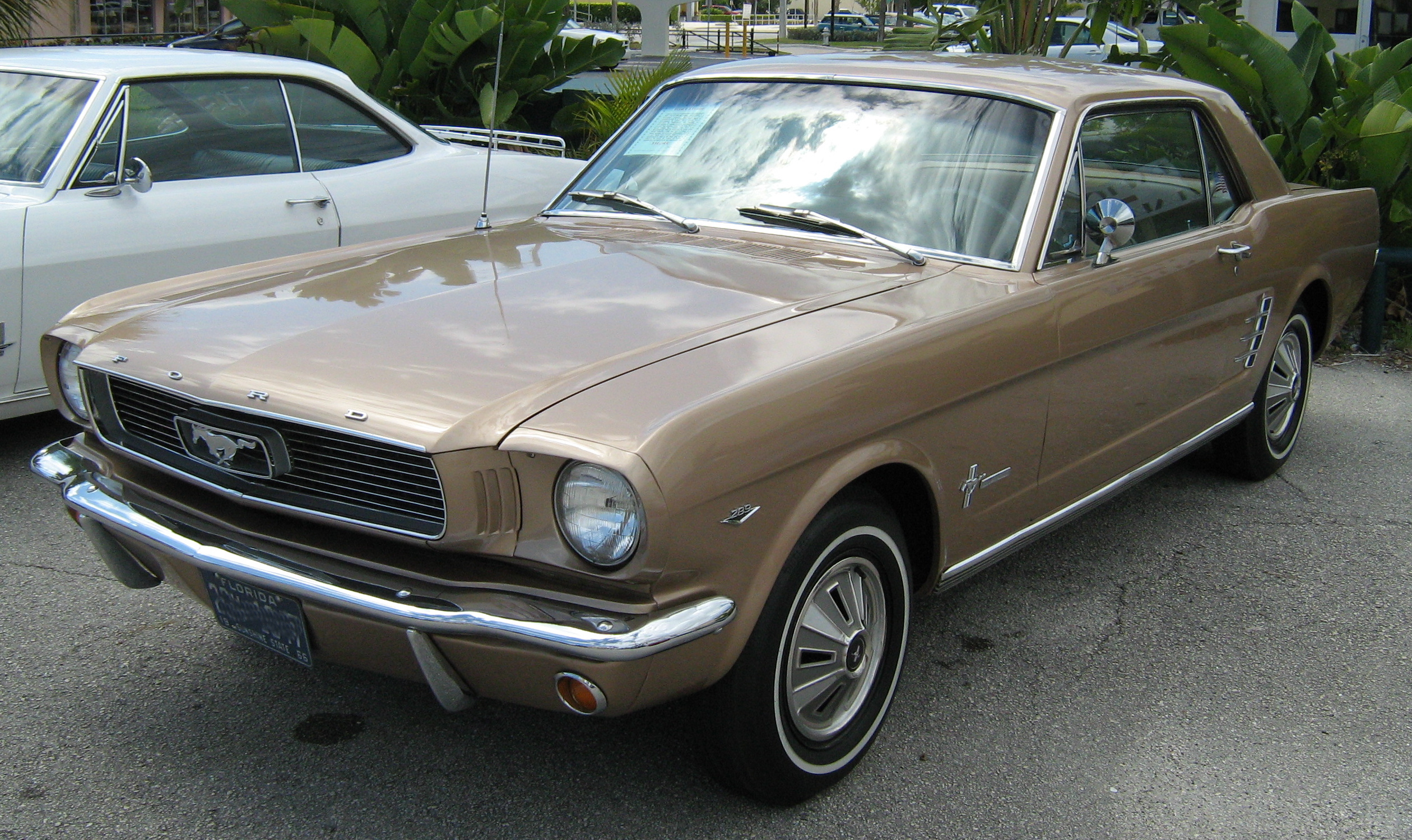
Pony car is an American class of automobile launched and inspired by the
Ford Mustang
The Ford Mustang is a series of American automobiles manufactured by Ford. In continuous production since 1964, the Mustang is currently the longest-produced Ford car nameplate. Currently in its sixth generation, it is the fifth-best selli ...
in 1964. It broke all post-World War II automobile sales records, "creating the 'pony car' craze soon adopted by competitors." The term describes an affordable, compact, highly styled car with a sporty or performance-oriented image
Examples of pony cars:
*
AMC Javelin
*
Chevrolet Camaro
*
Dodge Challenger
The Dodge Challenger is the name of three different generations of automobiles (two of those being pony cars) produced by American automobile manufacturer Dodge. However, the first use of the Challenger name by Dodge was in 1959 for marketing a ...
Personal luxury car

A personal luxury car is a North American market segment for premium
coupé
A coupe or coupé (, ) is a passenger car with a sloping or truncated rear roofline and two doors.
The term ''coupé'' was first applied to horse-drawn carriages for two passengers without rear-facing seats. It comes from the French past parti ...
or
convertible produced from 1952–2007. These two door cars prioritized comfort, styling and a high level of interior features. Not prioritizing maximum interior space, interior volumes are equivalent size to mid-size cars and are part of the
D-segment
The D-segment is the 4th category of the European segments for passenger cars, and is described as "large cars".
It is equivalent to the Euro NCAP "large family car" size class, and the present-day definition of the mid-size car category use ...
in the European car classification, and exterior dimensions can exceed
F-segment
The F-segment is the 6th category and largest of the Euro Car Segment, European segments for passenger cars, and always belongs to "Luxury_vehicle#Luxury_saloon_/_full-size_luxury_sedan, luxury cars".
The equivalent categories are full-size lux ...
.
The segment rose to popularity following the success of the 1958-60 Ford Thunderbird, which sold 200,000 units. Personal luxury cars from General Motors and Chrysler respectively include the Buick Riviera and Chrysler Cordoba.
Examples of personal luxury cars:
*
Ford Thunderbird
*
Cadillac Eldorado
*
Chrysler Cordoba
The Chrysler Cordoba is a full-sized luxury car based on the Chrysler Newport that was marketed during the 1970 model year only and two generations as an intermediate-sized two-door personal luxury model manufactured by Chrysler in North Americ ...
Sport compact
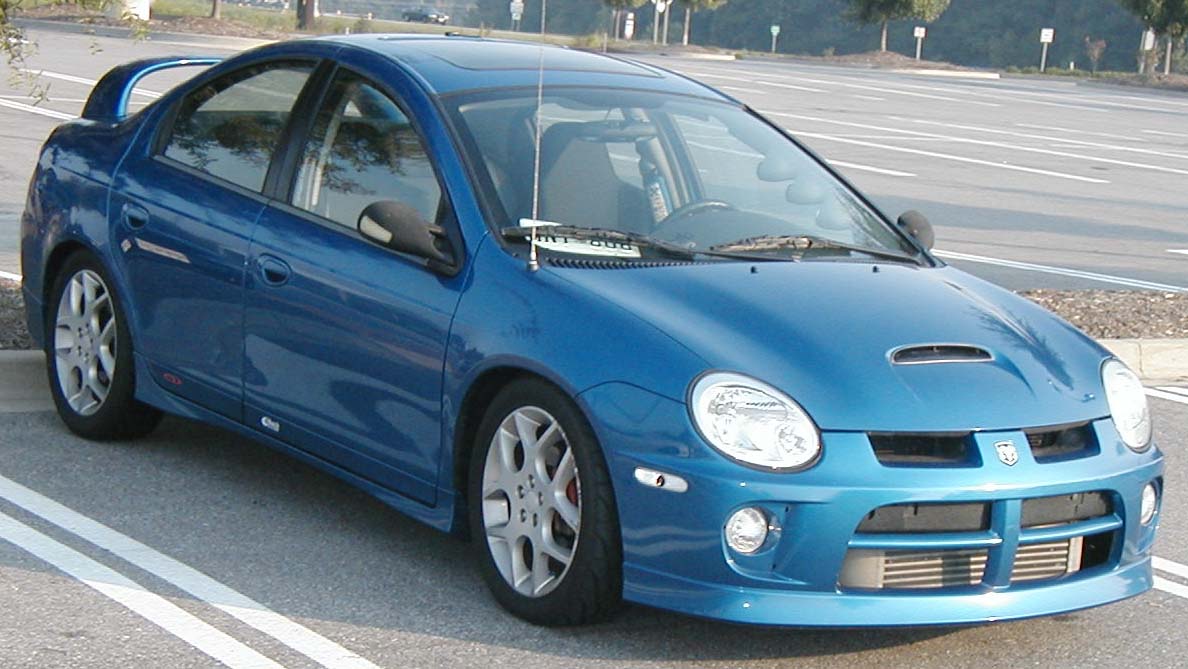
A sporting version of an affordable compact car or a subcompact car. There is no precise definition and the description is applied for marketing purposes to a wide variety of models.
Cars began to be marketed as sport compacts in the mid-1980s when it was used for option packages on American-built coupes. Since then, it has also been used for standalone sports car models and cars imported from Europe and Asia.
The European equivalent is a hot hatch. However, sport compacts are not restricted to just hatchback body styles.
Examples of sport compact cars:
*
Chevrolet Cavalier Z24
*
Ford Probe
The Ford Probe is a liftback coupé produced by Ford, introduced in 1988 and produced until 1997. The Probe was the result of Ford's collaboration with its longtime Japanese partner Mazda, and both generations of Probe were derived from the front ...
*
Honda Civic Si
The Honda Civic Si is a sport compact trim of Honda's Civic. The Si (Sport Injected) trim was introduced for the third generation of Honda Civics in both Japan and North America. In Canada and elsewhere, the trim became known as the SiR for the s ...
European market segments
Several other segment descriptions, listed below, are used in Europe. Cars from these segments may also be sold in other countries. However, usage of the terms is mostly specific to within Europe.
Grand tourer

A grand tourer (GT) is a car that is designed for high speed and long-distance driving, due to a combination of performance and luxury attributes. The most common format is a front-engine, rear-wheel-drive two-door coupé with either a two-seat or a 2+2 arrangement.
The term derives from the Italian language phrase ''gran turismo'' which became popular in the English language from the 1950s, evolving from fast touring cars and streamlined closed sports cars during the 1930s.
Examples of grand tourers:
*
Aston Martin V8
The Aston Martin V8 is a grand tourer manufactured by Aston Martin in the United Kingdom from 1969 to 1989. As with all traditional Aston Martins, it was entirely handbuilt – with each car requiring 1,200 man-hours to finish.
Aston Martin we ...
*
Lexus SC300/400
*
Ferrari 612 Scaglietti
Hot hatch

Hot hatch (shortened from hot hatchback) is a high-performance version of a mass-produced
hatchback
A hatchback is a car body configuration with a rear door that swings upward to provide access to a cargo area. Hatchbacks may feature fold-down second row seating, where the interior can be reconfigured to prioritize passenger or cargo volume. ...
car.
The term originated in the mid-1980s. However, factory high-performance versions of hatchbacks have been produced since the 1970s.
Front-mounted petrol engines, together with front-wheel drive, is the most common powertrain layout. However, all-wheel drive has become more commonly used since around 2010. Most hot hatches are manufactured in Europe or Asia.
Examples of hot hatches:
*
Volkswagen Golf GTi
*
Peugeot 205 GTi
Peugeot (, , ) is a French brand of automobiles owned by Stellantis.
The family business that preceded the current Peugeot companies was founded in 1810, with a steel foundry that soon started making hand tools and kitchen equipment, and then ...
*
Honda Civic Type R
See also
*
ACRISS Car Classification Code
*
Car body style
There are many types of car body styles. They vary depending on intended use, market position, location, and the era they were made in.
Current styles
;Buggy (automobile), Buggy: Lightweight off-road vehicle with sparse bodywork.
;Converti ...
*
Commercial vehicle
*
Three-wheeler
A three-wheeler is a vehicle with three wheels. Some are motorized tricycles, which may be legally classed as motorcycles, while others are tricycles without a motor, some of which are human-powered vehicles and animal-powered vehicles.
Overv ...
*
Truck classification
Truck classifications are typically based upon the maximum loaded weight of the truck, typically using the gross vehicle weight rating (GVWR) and sometimes also the gross trailer weight rating (GTWR), and can vary among jurisdictions.
United ...
*
Vehicle category
A vehicle category classifies a land vehicle or trailer for regulatory purposes.
UNECE categories
United Nations Economic Commission for Europe Information from Consolidated Resolution on the Construction of Vehicles (R.E.3), Revision 6.
Some ...
*
Vehicle size class
References
{{Private transport
classifications
 Microcars and their Japanese equivalent— kei cars— are the smallest category of automobile.
Microcars straddle the boundary between car and motorbike, and are often covered by separate regulations to normal cars, resulting in relaxed requirements for registration and licensing. Engine size is often or less, and microcars have three or four wheels.
Microcars are most popular in Europe, where they originated following World War II. The predecessors to micro cars are voiturettes and
Microcars and their Japanese equivalent— kei cars— are the smallest category of automobile.
Microcars straddle the boundary between car and motorbike, and are often covered by separate regulations to normal cars, resulting in relaxed requirements for registration and licensing. Engine size is often or less, and microcars have three or four wheels.
Microcars are most popular in Europe, where they originated following World War II. The predecessors to micro cars are voiturettes and  The smallest category of vehicles that are registered as normal cars is called A-segment in Europe, or "city car" in Europe and the United States. The United States Environmental Protection Agency defines this category as "minicompact." However, this term is not widely used.
The equivalents of A-segment cars have been produced since the early 1920s. However, the category increased in popularity in the late 1950s when the original Fiat 500 and BMC Mini were released.
Examples of A-segment / city cars / minicompact cars:
* Fiat 500
* Hyundai i10
*
The smallest category of vehicles that are registered as normal cars is called A-segment in Europe, or "city car" in Europe and the United States. The United States Environmental Protection Agency defines this category as "minicompact." However, this term is not widely used.
The equivalents of A-segment cars have been produced since the early 1920s. However, the category increased in popularity in the late 1950s when the original Fiat 500 and BMC Mini were released.
Examples of A-segment / city cars / minicompact cars:
* Fiat 500
* Hyundai i10
*  The next larger category small cars is called B-segment Europe,
The next larger category small cars is called B-segment Europe,  The largest category of small cars is called ''C-segment'' or ''small family car'' in Europe, and ''compact car'' in the United States.
The size of a compact car is defined by the United States Environmental Protection Agency (EPA), as having a combined interior and cargo volume of .
Examples of C-segment / compact / small family cars:
*
The largest category of small cars is called ''C-segment'' or ''small family car'' in Europe, and ''compact car'' in the United States.
The size of a compact car is defined by the United States Environmental Protection Agency (EPA), as having a combined interior and cargo volume of .
Examples of C-segment / compact / small family cars:
*  In Europe, the third-largest category for passenger cars is called ''D-segment'' or ''large family car''.
In the United States, the equivalent term is ''mid-size'' or ''intermediate'' cars. The U.S. Environmental Protection Agency (EPA) defines a mid-size car as having a combined passenger and cargo volume of .
Examples of D-segment / large family / mid-size cars:
* Chevrolet Malibu
* Ford Mondeo
* Kia K5
In Europe, the third-largest category for passenger cars is called ''D-segment'' or ''large family car''.
In the United States, the equivalent term is ''mid-size'' or ''intermediate'' cars. The U.S. Environmental Protection Agency (EPA) defines a mid-size car as having a combined passenger and cargo volume of .
Examples of D-segment / large family / mid-size cars:
* Chevrolet Malibu
* Ford Mondeo
* Kia K5
 In Europe, the second-largest category for passenger cars is E-segment / executive car, which are usually luxury cars.
In other countries, the equivalent terms are ''full-size car'' or ''large car'', which are also used for relatively affordable large cars that are not considered luxury cars.
Examples of non-luxury full-size cars:
*
In Europe, the second-largest category for passenger cars is E-segment / executive car, which are usually luxury cars.
In other countries, the equivalent terms are ''full-size car'' or ''large car'', which are also used for relatively affordable large cars that are not considered luxury cars.
Examples of non-luxury full-size cars:
*  Mini MPV is the smallest size of MPVs and the vehicles are often built on the platforms of B-segment hatchback models.
Examples of Mini MPVs:
* Fiat 500L
*
Mini MPV is the smallest size of MPVs and the vehicles are often built on the platforms of B-segment hatchback models.
Examples of Mini MPVs:
* Fiat 500L
*  Compact MPV is the middle size of MPVs. The compact MPV size class sits between the mini MPV and large MPV (minivan) size classes.
Compact MPVs remain predominantly a European phenomenon, although they are also built and sold in many Latin American and Asian markets.
Examples of Compact MPVs:
*
Compact MPV is the middle size of MPVs. The compact MPV size class sits between the mini MPV and large MPV (minivan) size classes.
Compact MPVs remain predominantly a European phenomenon, although they are also built and sold in many Latin American and Asian markets.
Examples of Compact MPVs:
*  The largest size of minivans is also referred to as "large MPV" and became popular following the introduction of the 1984 Renault Espace and Dodge Caravan. Since the 1990s, the smaller compact MPV and mini MPV sizes of minivans have also become popular. If the term "minivan" is used without specifying a size, it usually refers to a large MPV.
Examples of Large MPVs:
* Chrysler Pacifica
* Ford S-Max
* Toyota Sienna
The largest size of minivans is also referred to as "large MPV" and became popular following the introduction of the 1984 Renault Espace and Dodge Caravan. Since the 1990s, the smaller compact MPV and mini MPV sizes of minivans have also become popular. If the term "minivan" is used without specifying a size, it usually refers to a large MPV.
Examples of Large MPVs:
* Chrysler Pacifica
* Ford S-Max
* Toyota Sienna
 The premium compact class (also called subcompact executive) is the smallest category of luxury cars. It became popular in the mid-2000s, when European manufacturers — such as Audi, BMW, and Mercedes-Benz — introduced new entry-level models that were smaller and cheaper than their compact executive models.
Examples of premium compact cars:
* Acura ILX
*
The premium compact class (also called subcompact executive) is the smallest category of luxury cars. It became popular in the mid-2000s, when European manufacturers — such as Audi, BMW, and Mercedes-Benz — introduced new entry-level models that were smaller and cheaper than their compact executive models.
Examples of premium compact cars:
* Acura ILX
*  A compact executive car or a compact luxury car is a premium car larger than a ''premium compact'' and smaller than an ''executive car''. Compact executive cars are equivalent size to mid-size cars and are part of the
A compact executive car or a compact luxury car is a premium car larger than a ''premium compact'' and smaller than an ''executive car''. Compact executive cars are equivalent size to mid-size cars and are part of the  An executive car is a premium car larger than a ''compact executive'' and smaller than an ''full-size luxury'' car. Executive cars are classified as E-segment cars in the European car classification.
In the United States and several other countries, the equivalent categories are full-size car (not to be confused with the European category of "full-size luxury car") or ''mid-size luxury'' car.
Examples of executive cars:
* Mercedes-Benz E-Class
* Lexus GS
*
An executive car is a premium car larger than a ''compact executive'' and smaller than an ''full-size luxury'' car. Executive cars are classified as E-segment cars in the European car classification.
In the United States and several other countries, the equivalent categories are full-size car (not to be confused with the European category of "full-size luxury car") or ''mid-size luxury'' car.
Examples of executive cars:
* Mercedes-Benz E-Class
* Lexus GS
*  The largest size of a luxury car is known as a ''luxury saloon'' in the United Kingdom and a ''full-size luxury car'' in the United States. These cars are classified as
The largest size of a luxury car is known as a ''luxury saloon'' in the United Kingdom and a ''full-size luxury car'' in the United States. These cars are classified as  Sports cars are designed to emphasize handling, performance, or the thrill of driving. Sports cars originated in Europe in the early 1900s, with one of the first recorded usages of the term "sports car" being in ''The Times'' newspaper in the United Kingdom in 1919.Motor Show. Development of the Sporting Car. ''The Times'' (London, England), Wednesday, 12 November 1919; pg. 6; Issue 42255 Sports cars started to become popular during the 1920s. The term was originally used for two-seat roadsters (cars without fixed roofs). However, since the 1970s the term has also been used for cars with fixed roofs (which were previously considered grand tourers).
Examples of sports cars:
* Chevrolet Corvette
* Mazda MX-5
*
Sports cars are designed to emphasize handling, performance, or the thrill of driving. Sports cars originated in Europe in the early 1900s, with one of the first recorded usages of the term "sports car" being in ''The Times'' newspaper in the United Kingdom in 1919.Motor Show. Development of the Sporting Car. ''The Times'' (London, England), Wednesday, 12 November 1919; pg. 6; Issue 42255 Sports cars started to become popular during the 1920s. The term was originally used for two-seat roadsters (cars without fixed roofs). However, since the 1970s the term has also been used for cars with fixed roofs (which were previously considered grand tourers).
Examples of sports cars:
* Chevrolet Corvette
* Mazda MX-5
*  A ''sports sedan'' — also known as "sports saloon" — is a subjective term for a sedan/saloon car which is designed to have sporting performance or handling characteristics.
Examples of sports sedans:
* BMW M5
* Mazdaspeed6 / Mazda 6 MPS
*
A ''sports sedan'' — also known as "sports saloon" — is a subjective term for a sedan/saloon car which is designed to have sporting performance or handling characteristics.
Examples of sports sedans:
* BMW M5
* Mazdaspeed6 / Mazda 6 MPS
*  The earliest type of passenger vehicle is called an "off-roader", "four-by-four" or "four-wheel drive". Off-road vehicles usually more focussed on off-road capability than SUVs and crossover SUVs (often compromising their on-road ride quality or handling). Common features of off-road vehicles are
The earliest type of passenger vehicle is called an "off-roader", "four-by-four" or "four-wheel drive". Off-road vehicles usually more focussed on off-road capability than SUVs and crossover SUVs (often compromising their on-road ride quality or handling). Common features of off-road vehicles are  A sports utility vehicle (SUV) combines elements of road-going passenger cars with features from off-road vehicles, such as raised ground clearance and four-wheel drive.
There is no commonly agreed definition of an SUV, and usage varies between countries. Some definitions claim that an SUV must be built on a light-truck chassis. However, a broader definition considers any vehicle with off-road design features as an SUV. In some countries — such as the United States — SUVs have been classified as "light trucks", resulting in more lenient regulations compared to passenger cars.
The predecessors to SUVs date back to military and low-volume models from the late 1930s, and the four-wheel drive station wagons / carryalls that began to be introduced in 1949. The 1984 Jeep Cherokee (XJ) is considered to be the first SUV in the modern style. Most SUVs produced today use unibody construction (as per passenger cars). However, in the past, many SUVs used body-on-frame construction.
Examples of SUVs:
*
A sports utility vehicle (SUV) combines elements of road-going passenger cars with features from off-road vehicles, such as raised ground clearance and four-wheel drive.
There is no commonly agreed definition of an SUV, and usage varies between countries. Some definitions claim that an SUV must be built on a light-truck chassis. However, a broader definition considers any vehicle with off-road design features as an SUV. In some countries — such as the United States — SUVs have been classified as "light trucks", resulting in more lenient regulations compared to passenger cars.
The predecessors to SUVs date back to military and low-volume models from the late 1930s, and the four-wheel drive station wagons / carryalls that began to be introduced in 1949. The 1984 Jeep Cherokee (XJ) is considered to be the first SUV in the modern style. Most SUVs produced today use unibody construction (as per passenger cars). However, in the past, many SUVs used body-on-frame construction.
Examples of SUVs:
*  A crossover SUV— also called crossover or CUV— is a type of sports utility vehicle (SUV) that uses a
A crossover SUV— also called crossover or CUV— is a type of sports utility vehicle (SUV) that uses a  A personal luxury car is a North American market segment for premium
A personal luxury car is a North American market segment for premium  A sporting version of an affordable compact car or a subcompact car. There is no precise definition and the description is applied for marketing purposes to a wide variety of models.
Cars began to be marketed as sport compacts in the mid-1980s when it was used for option packages on American-built coupes. Since then, it has also been used for standalone sports car models and cars imported from Europe and Asia.
The European equivalent is a hot hatch. However, sport compacts are not restricted to just hatchback body styles.
Examples of sport compact cars:
* Chevrolet Cavalier Z24
*
A sporting version of an affordable compact car or a subcompact car. There is no precise definition and the description is applied for marketing purposes to a wide variety of models.
Cars began to be marketed as sport compacts in the mid-1980s when it was used for option packages on American-built coupes. Since then, it has also been used for standalone sports car models and cars imported from Europe and Asia.
The European equivalent is a hot hatch. However, sport compacts are not restricted to just hatchback body styles.
Examples of sport compact cars:
* Chevrolet Cavalier Z24
*  A grand tourer (GT) is a car that is designed for high speed and long-distance driving, due to a combination of performance and luxury attributes. The most common format is a front-engine, rear-wheel-drive two-door coupé with either a two-seat or a 2+2 arrangement.
The term derives from the Italian language phrase ''gran turismo'' which became popular in the English language from the 1950s, evolving from fast touring cars and streamlined closed sports cars during the 1930s.
Examples of grand tourers:
*
A grand tourer (GT) is a car that is designed for high speed and long-distance driving, due to a combination of performance and luxury attributes. The most common format is a front-engine, rear-wheel-drive two-door coupé with either a two-seat or a 2+2 arrangement.
The term derives from the Italian language phrase ''gran turismo'' which became popular in the English language from the 1950s, evolving from fast touring cars and streamlined closed sports cars during the 1930s.
Examples of grand tourers:
*  Hot hatch (shortened from hot hatchback) is a high-performance version of a mass-produced
Hot hatch (shortened from hot hatchback) is a high-performance version of a mass-produced